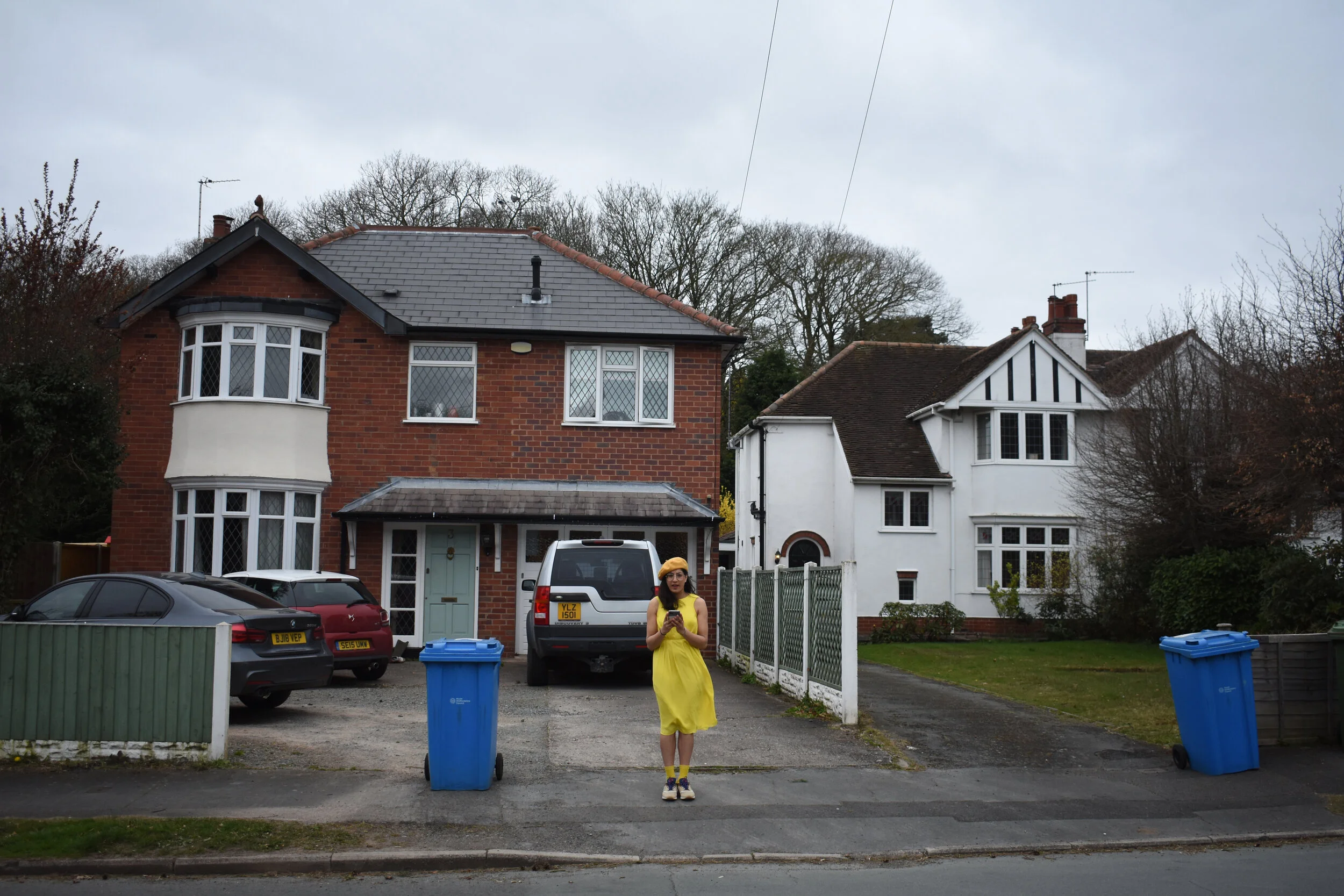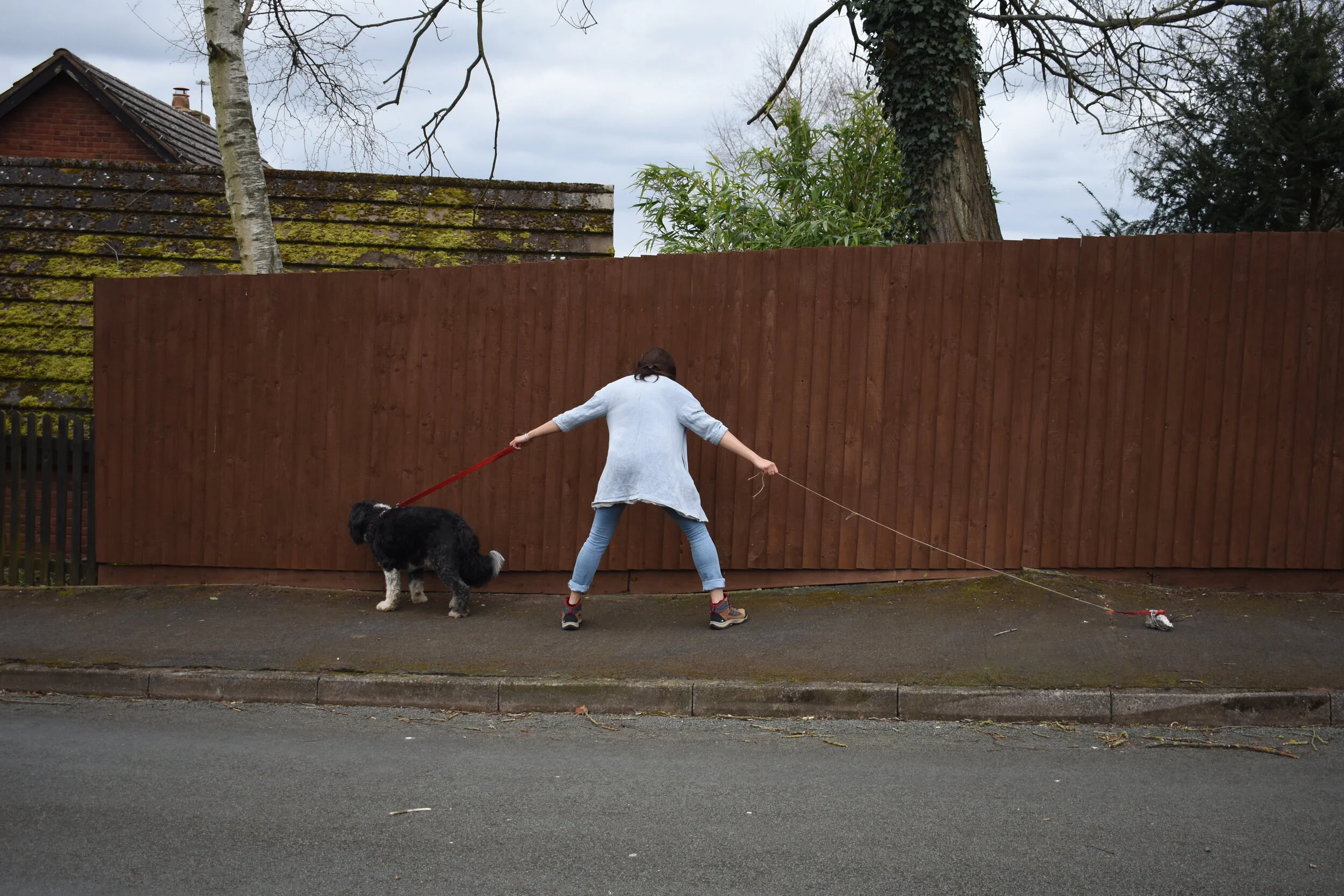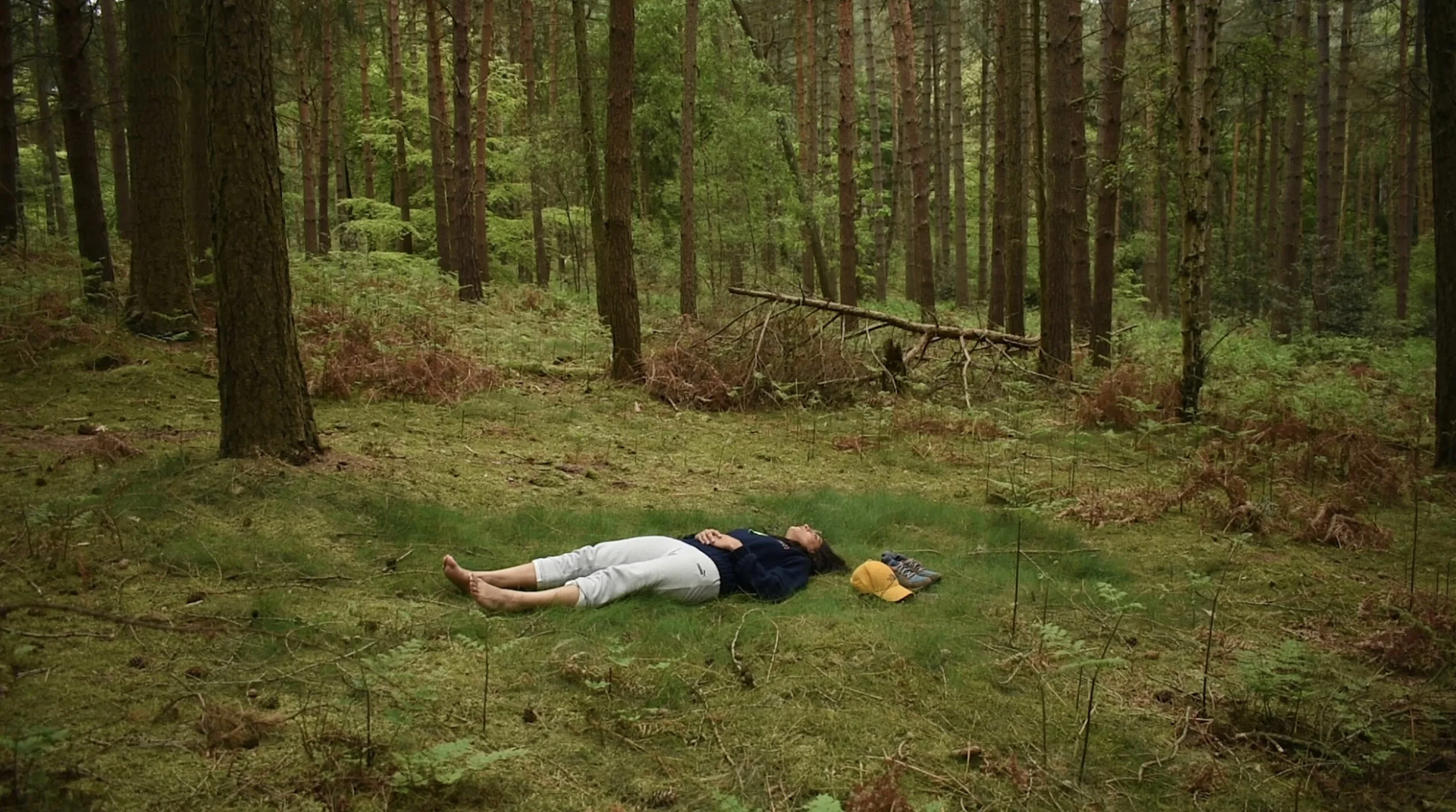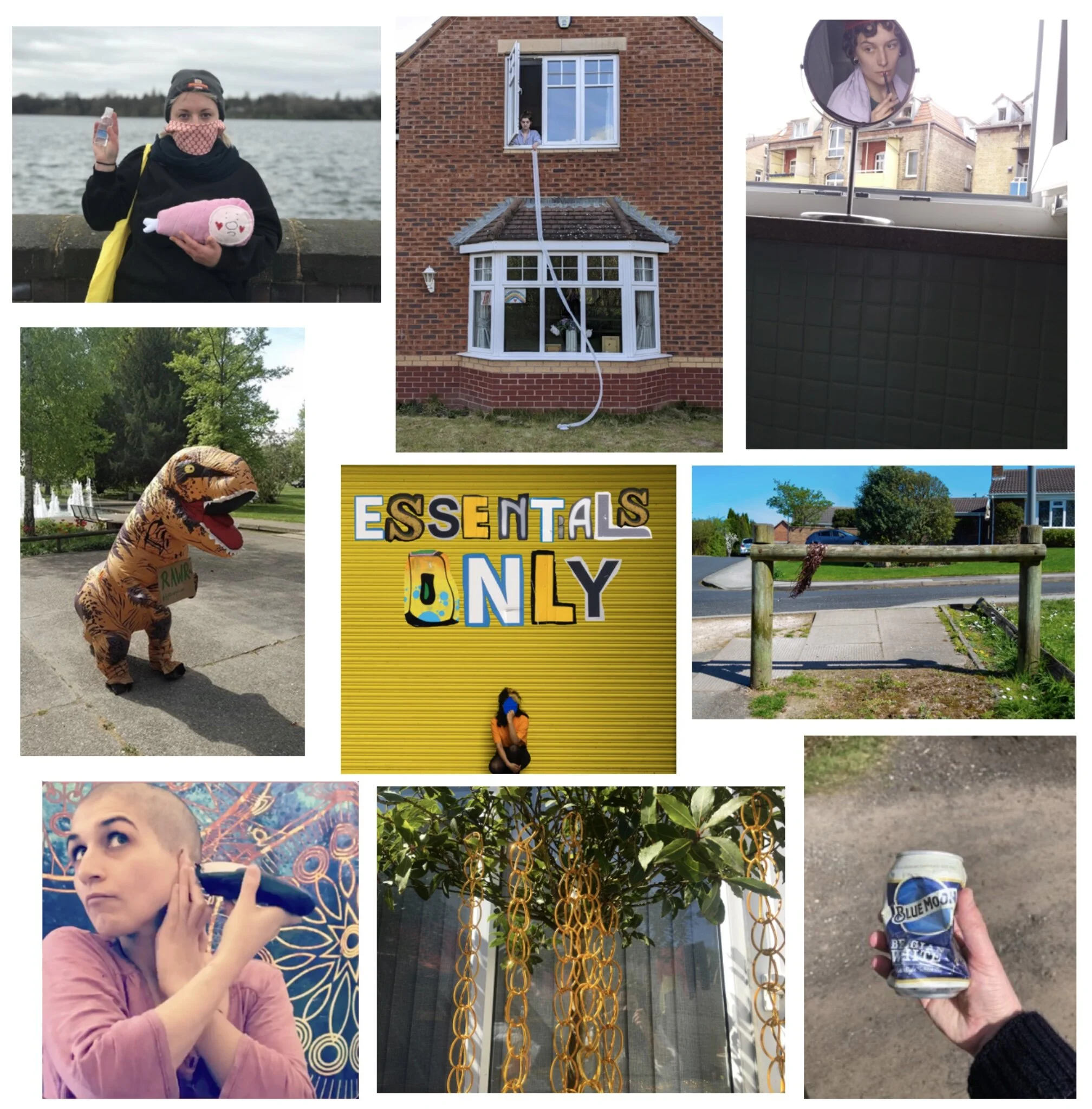Bostin News: Rupi Dhillon explores Participation in Isolation
Title : Ode to Koki Tanaka / Reading nuclear news to the street I currently live on Duration - 12 mins
Rupi Dhillon is a British Indian artist currently based in the Black Country. In her work she explores relationships between (wo)men and their environment, exploring how culture is connected to belonging. Her current work reimagines cultural experience through participatory performance, collaboration, gifting and found objects.
Rupi reflects here on the genre of performance art via five myths commonly associated with it, alongside her recent body of work ‘Participation in Isolation’, made throughout April 2020.
Performance Art in the Black Country
Let’s talk about performance art. Many of us may be wondering what on earth is ‘performance art’? Dance, drama, theatre – the performing arts, surely? Some of us might have a general idea of performance art or perhaps think that it’s for failed painters and sculptors.
I am hoping by the end of this text we can reach an understanding or perhaps even a build a new opinion of performance art. We‘ll work together on debunking five of its common myths and talk about some of the possibilities and functions of performance art as an art form with reference to my recent project ‘Participation in Isolation’.
In April, during the early stages of lockdown, I set a thirty-day challenge on Instagram. The task was simple: use your government-sanctioned one walk a day to do a performance. Artists realised the potential in both outdoor and indoor domestic spaces to make performance art and as a result, Instagram’s online virtual platform became a type of gallery space. All artists had to do was perform an action and document it. Using the hashtag #ParticipationInIsolation multiple online audiences were able to follow the artworks made by myself and others as they progressed over the course of the month.
Myth 1 – Performance art is theatre
The performing arts and performance art are often confused. The two terms, however, are completely different. ‘The performing arts’ suggest that art is being performed, where as ‘performance art’ is a type of art. In the latter, we mean performance is used as a medium in and of itself. Where a painter uses various types of paint as a medium, or a sculptor uses various tangible materials such as wood, clay and metal, a performance artist uses their body or live action as a medium. This could include the act of walking, talking, eating, writing a list of actions to be performed by another person or anything performed by the artist or those taking part within the work.
The ‘Participation in Isolation’ project is an example of how everyday activities can become performance artworks. Activities from participants ranged from walking the entire perimeter of a room, shaving their head, going shopping, planting a tree, eating a Cadbury’s Creme Egg, playing instruments outdoors, collecting herbs, making collages, taking a bath and kicking a can. Performance art is performing these actions, and taking the time to reflect mindfully and appreciate how our surroundings and own ideas affect the action.
Myth 2 – Performance art is pretentious
We often fear that which we do not understand. It is only through understanding that we begin to learn and appreciate that which we fear. Performance art was originally formulated to challenge the status quo and traditional hierarchical systems within art. Artists were able to reach audiences directly rather than through signs and symbols present within paintings and sculptures.
The ‘Participation in Isolation’ project is also a good example of how performance art, for the most part, is anything but pretentious. April’s month of performances documented on Instagram saw both artists and non-artists use spaces around them to perform walks, tasks, drawings, gestures and more, sometimes including family members and if not, then at the least engaging with audiences virtually. Project participants were able to connect through the platform and just have some good old non-serious fun. This brings us to our next myth.
Title : Between a rock and a hard place / Taking the pets for a walk Duration - 38 mins
Myth 3 – Performance art is serious and boring
The simple fact that there is live action being performed shows that performance art is anything but boring. Unlike more traditional works of art, artists and audiences are able to engage in actions happening right before our eyes. Moving images, anticipation and potential are a huge aspect of the entertainment of the work.
For instance, Two Metre Rule, performed in collaboration with artist Fred Hubble, was exactly that. For the entire duration of a walk Fred and I both held a two-metre fold-out ruler as we travelled through The Million Woods near Stourbridge, maintaining a two-metre distance at all times, but also taking time to appreciate the ludicrous nature of the act itself. Most of all we were able to appreciate the countryside in a way that we had never imagined.
Title: Two Metre Rule / Collaboration with Fred Hubble Duration - 64 mins
Myth 4 – Performance art is uncomfortable
Performance art can be uncomfortable, but not always! It depends entirely on what the artist is trying to achieve. Performance art can be a guided walk, a cooking workshop, a dance or perhaps a collective yoga and meditation session. There is nothing more relaxing than meditation, surely?
Through the ‘Participation in Isolation’ challenge, artists often took days for rest as a performative action. I also indulged in this. As I lay on a bed of grass, I was able to pause. I could hear the birds and gently observed the clouds that passed over my head.
Title : Rest Duration - 16 mins
Myth 5 – Performance art is hard to connect with
The pandemic itself is a useful example of how people can come together during times of crisis. Performance as a medium was exactly the catalyst I needed to help facilitate connection online. With our contact with one another limited, the medium has allowed for connection like none before.
‘Participation in Isolation’ has linked audiences and artists from as far away as Germany and India with those in the UK. Whilst we may have been social distancing, one could argue that we have never been as close as we are when we are together virtually.
Artists from left to right - Beth Nicol, Charlie Fitz, Josephine Hochbruck, Jule Lotte, Thanya Mavish, Jacob Carter, Yazmin Fay Boyle, Hira Butt and Fred Hubble
Performance art allows for connection and discourse. A static piece of sculpture or painting cannot do this in the same way. We are forced to interact as an audience when we encounter performance art and interaction and participation arguably leads to a collective understanding of the work.
The ‘Participation in Isolation’ project can be followed via the Instagram hashtag #ParticipationInIsolation and if you don't have Instagram you can also access the works created as part of this project online via https://www.instagram.com/explore/tags/participationinisolation/
Sites in the Black Country which feature:
Kinver Edge
The Million Woods
New Wood
Stourbridge Canal/The Cut
Prestwood
Bunkers Wood
The Sand Quarry
Rupi Dhillon was commissioned by Content Editor Anneka French





